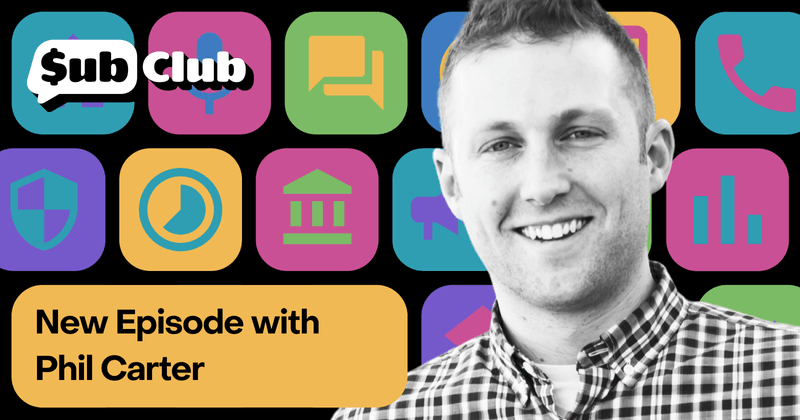“If you don’t have a product that people want, then nothing else matters” — Phil Carter, Elemental Growth
Phil Carter breaks down his formula for building a successful subscription app business.

So you want to grow your app business (of course you do!). But knowing how to do this — what to focus on and how best to allocate your resources — can be a real challenge.
For advice on this, look no further than Phil Carter, an independent subscription growth advisor and founder of Elemental Growth.
Through years of experience working on growth teams at companies like Quizlet and Ibotta, Phil has devised a time-tested framework for building a sustainable app business: the Subscription Value Loop. This straightforward 3-step framework helps app businesses identify product-market fit, build and deliver remarkable solutions, and invest profits back into the business to shore up their competitive advantage.
The 4 Rs of value creation
According to Phil, the most successful apps provide value that is robust, rapid, repeatable, and remarkable. “If you don’t have a product that people really want, then nothing else matters,” he explains. “Is it robust? Are you delivering value rapidly? Is it repeatable value? And then is it remarkable enough that people are going to talk about it and ultimately build a community around it?”
The most successful apps do all of these things — and they don’t have to sacrifice their mission in the process. Take the language learning app Duolingo, for example. Duolingo provides users gamified language lessons (robust, repeatable value), invites users to sign up through a streamlined, immersive onboarding sequence (delivering that value rapidly), and uses a freemium model to make a basic version of the app available for free but also provide a more luxe experience for paid subscribers (capturing value, while staying true to their mission of making language learning accessible for all).
Capitalizing on virality
Something else that highly successful apps like Tinder and Strava do is encourage users to engage not just with the product, but also with each other. Phil highlights the benefits of this kind of word of mouth for advertising, adoption, and retention.
“That does two things that are important,” he points out. “1) It helps drive more organic acquisition, which brings down blended CAC and gives you a more sustainable business model. 2) It creates this installed community of users who are really loyal and talking to each other… which really helps with long-term retention.”
This is particularly important now that the app stores are more crowded than ever and ATT has made paid acquisition much more difficult.
Pricing, payments, and promotions… oh my!
We talk a lot about app monetization here at RevenueCat. Phil has some great tips for effectively capturing value through what he calls the 5 P’s: paywalls, pricing, packaging, payments, and promotions.
It may seem obvious, but hiding your paywall, such that users aren’t aware that you have a premium offering, is just leaving money on the table. Optimizing paywall placement is an easy way to increase the number of views on your paywall and improve conversions.
The meditation app Calm takes paywall optimization one step further: customizing each user’s paywall experience based on what channel they came through.
Last, but certainly not least, don’t forget to make it easy for users to purchase your product. These days, alternative payment platforms like Venmo and PayPal are surpassing credit cards in total processed payments (especially in international markets). Setting your app up to accept these forms of payment can lead to higher revenue.
Interested in learning more from Phil? Listen to or watch the full conversation on the podcast, and check out Phil’s Consumer Subscription Growth course on Reforge.
You might also like
- Blog post
Scaling UA without wrecking your conversion rate: A Meta campaign playbook
A structured testing system helped one app lower cost-per-trial while targeting its most profitable users
- Blog post
Gamification in apps: A complete guide to using motivation to drive real value
Why streaks fall short and 11 apps getting gamification right
- Blog post
Apple’s June 2025 EU update: one entitlement, three fees, and CTF’s 2026 sunset
What apps in the EU should do after Apple’s DMA tweak.

